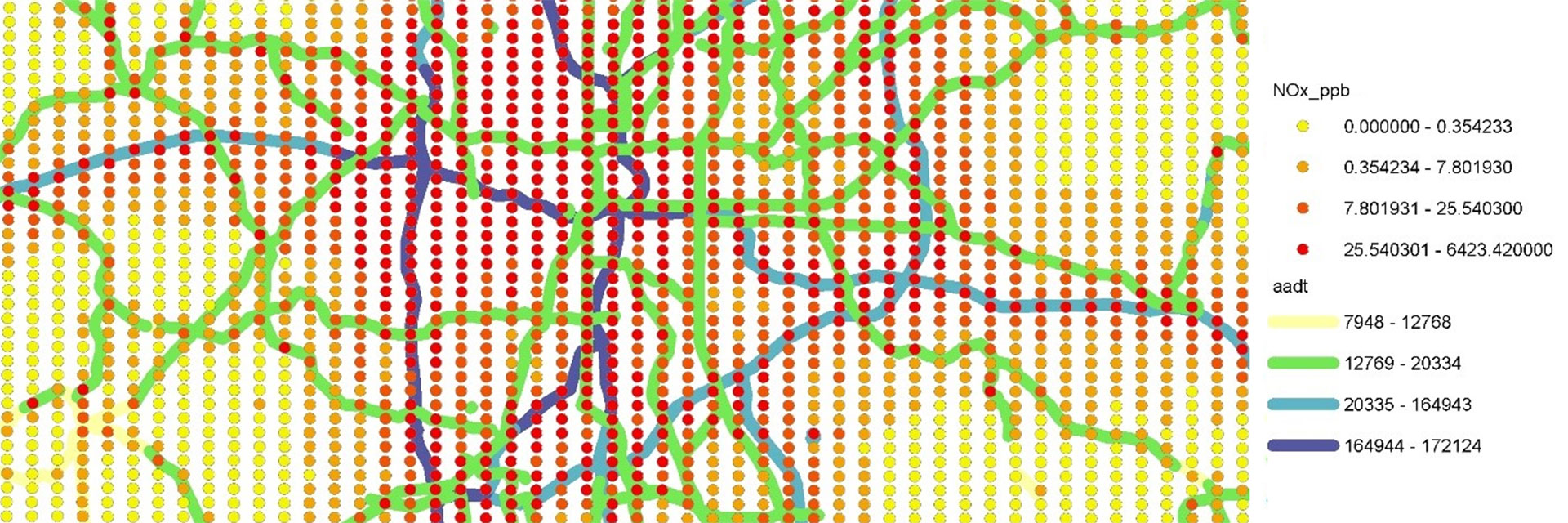
Assessing Our Impact on the Environment
CQGRD seeks a better understanding of our impact on the environment by conducting research on the effects of the built environment on air and water quality. We work with a variety of organizations to develop state-of-the-art simulation models and analytical approaches to better understand the impacts of urban development.
CQGRD also seeks to preserve and enhance environmental quality by making people aware of the economic benefits and community value of green infrastructure for effective water management.
Related project: Freight Impacts on Small Urban and Rural Areas
Sponsor: U.S. Department of Transportation
Timeframe: April 2014-August 2016
This study estimates the concentration levels of pollutants emitted by freight movement. Specifically, the study focuses on two criteria pollutants monitored under national air quality standards -- nitrogen dioxide (NO2) and particle pollution (PM2.5).
These emissions are often evaluated at the county level, without differentiation between urban and rural areas. While many areas affected by freight traffic are urban areas, little attention has been paid to the small urban and rural areas. Georgia’s rural and small urban areas are home to more than 1 million and 1.5 million residents, respectively. Rural and small urban populations tend to be proportionally older, less racially diverse, and less wealthy than urban areas. Nearly a quarter of residents in small urban areas are below the poverty line, making them vulnerable to health impacts of freight emissions.
This study uses disaggregated data to estimate current and future freight emissions at local levels along the Georgia Freight Corridor for urban, small urban, and rural areas. Though urban areas were found to have greater exposure to the two criteria pollutants, some rural communities had higher 95th and 99th percentile concentration values than small urban communities, implying that there are some rural communities in Georgia that are exposed to a large amount of freight emissions, and are thus more negatively affected than small urban areas.
The analysis was taken a step further by evaluating the exposure and health risks to environmental justice (EJ) and other vulnerable populations along the corridor. The results show that in both 2007 and 2040, communities of color and residents living in poverty were and will likely be disproportionately exposed to high levels of freight emissions. The vulnerability of these groups should be explicitly addressed in the freight planning process to mitigate impacts.
Additional Projects
Title: City of Milton, GA Bike and Pedestrian Plan
Sponsor: Georgia Legislature
Timeframe: January 1, 2007-June 1, 2007
Title: Metropolitan Atlanta: Alternative Land Use Futures Project
Sponsor: NA
Timeframe: August 1, 2002-February 1, 2003